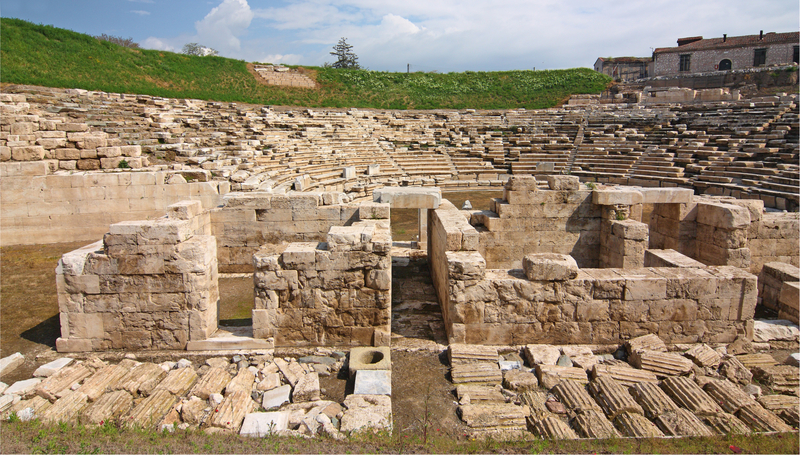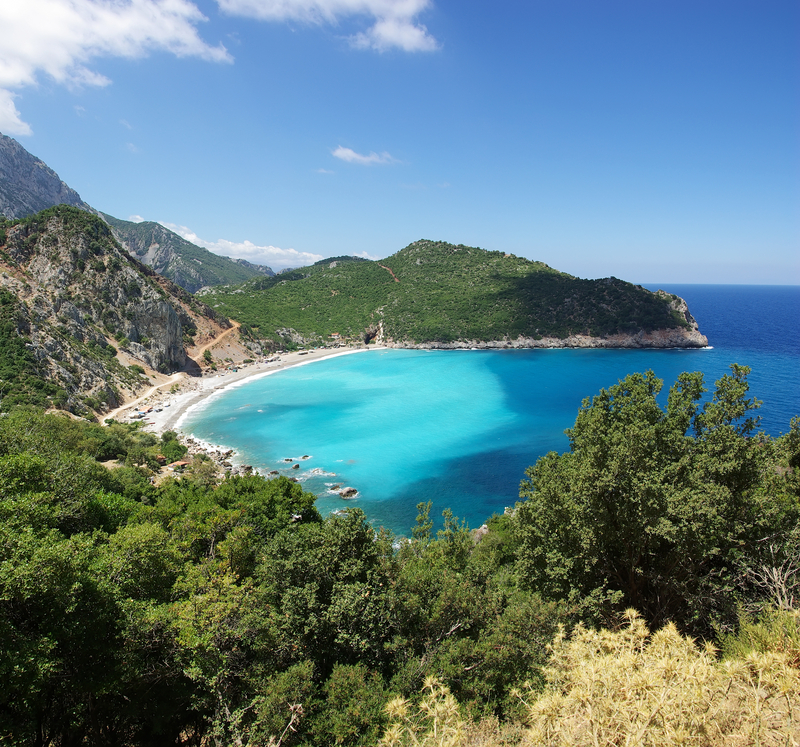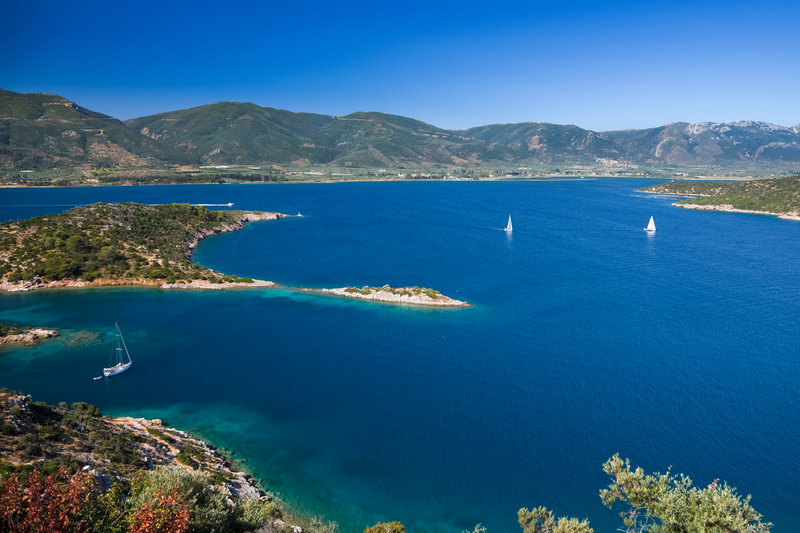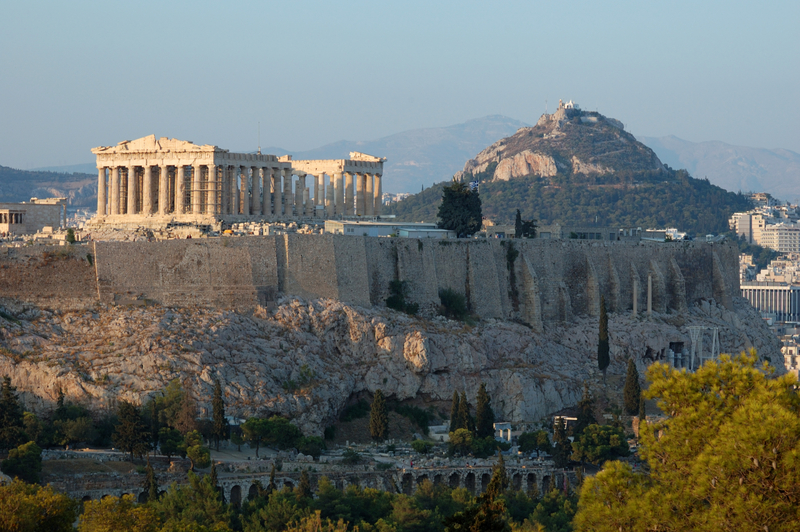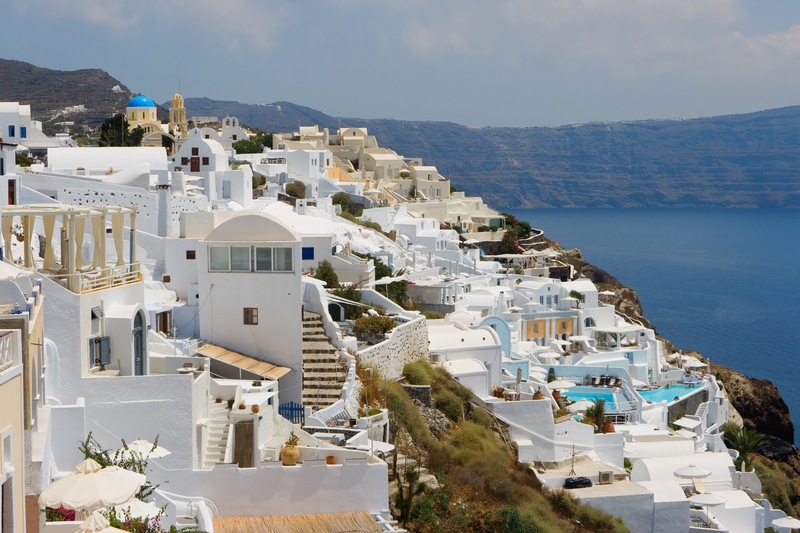The village of Akrotiri, Greece, is on the island of Santorini in the Aegean Sea approximately 120 miles southeast of the Greek mainland. Santorini is one of the Cyclades Islands. Akrotiri is in the southwestern part of the island approximately eight miles southwest of the Santorini National Airport. Transportation options from the airport to Akrotiri include renting a car, taking a taxi or taking a bus. Visitors can take ferries to Santorini from the other Cyclades Islands and Athens. The ferry port is in the town of Fira about seven and a half miles from Akrotiri. Buses run between Fira and Akrotiri.
 Archaeological excavations in the Akrotiri area revealed that the area was inhabited 3,500 years ago. A town near Akrotiri was buried in a volcanic eruption in 1,450 B.C. Buildings and objects in the town were preserved under volcanic ash. The size of the town indicates that it was a main port on the Aegean Sea.
Archaeological excavations in the Akrotiri area revealed that the area was inhabited 3,500 years ago. A town near Akrotiri was buried in a volcanic eruption in 1,450 B.C. Buildings and objects in the town were preserved under volcanic ash. The size of the town indicates that it was a main port on the Aegean Sea.
Places to see in Akrotiri include historic sites, a caldera, a lighthouse and the beach. Visitors can see the remains of the Venetian Castle from medieval times.
The caldera is a large depression created by the volcanic eruption in 1,450 B.C. It is visible from the road to Akrotiri and from several locations in the village.
The lighthouse was built in 1892 and is occasionally open for tours. Visitors can see spectacular sunsets here.
Red Beach and White Beach are two of Akrotiri’s beaches. The Red Beach has black sand with a reddish tint. Beach chairs are available here. There is a small canteen. Black and red volcanic rocks are behind the beach. There are places for snorkeling at Red Beach.
White Beach is only accessible by boat. The sand here is white, gray and black. Beach chairs and umbrellas are available here.
The Apanemo Hotel is one of the places to stay in Akrotiri. Guests can stay in studios or apartments. The apartments have kitchenettes. Visitors will have views of the caldera and the sea. The hotel has a swimming pool.
The Santorini Princess Suites in Akrotiri has three-bedroom suites with three bathrooms. This hotel has a heated swimming pool, a tennis court and a garden.
Akrotiri visitors can order traditional Greek food in the village’s restaurants. Grilled squid is served at the Taverna Aeolos. Menu items at Kapetan Dimitris include grilled fish and a split pea purée with onions.
